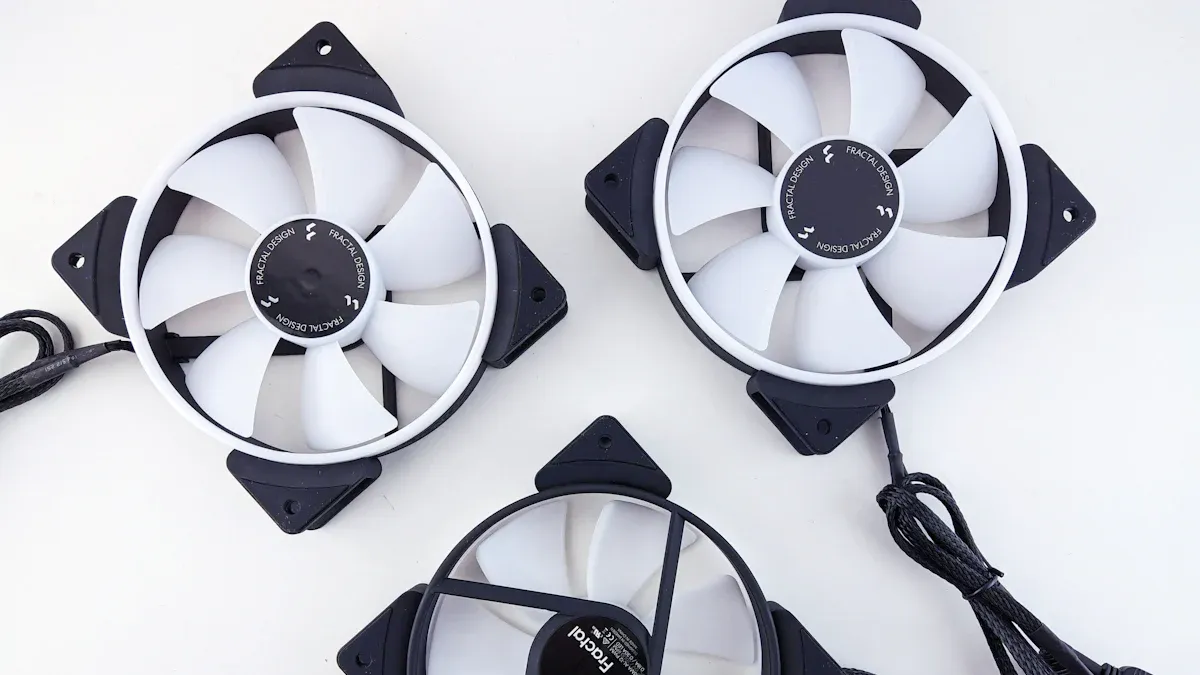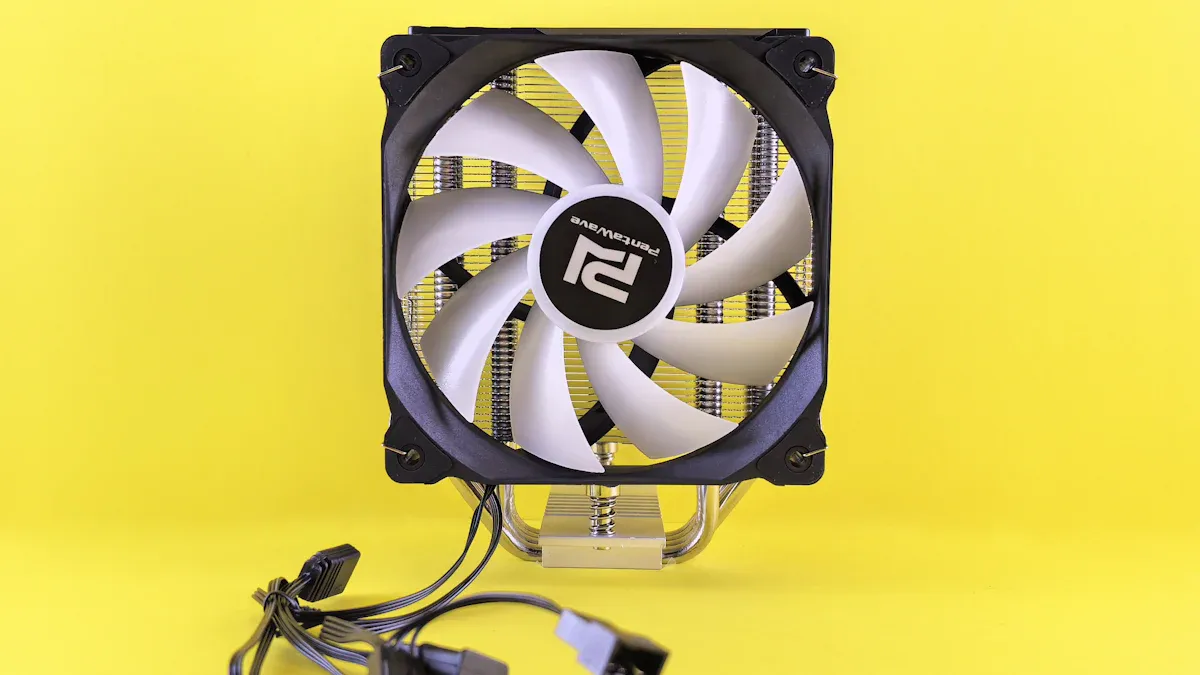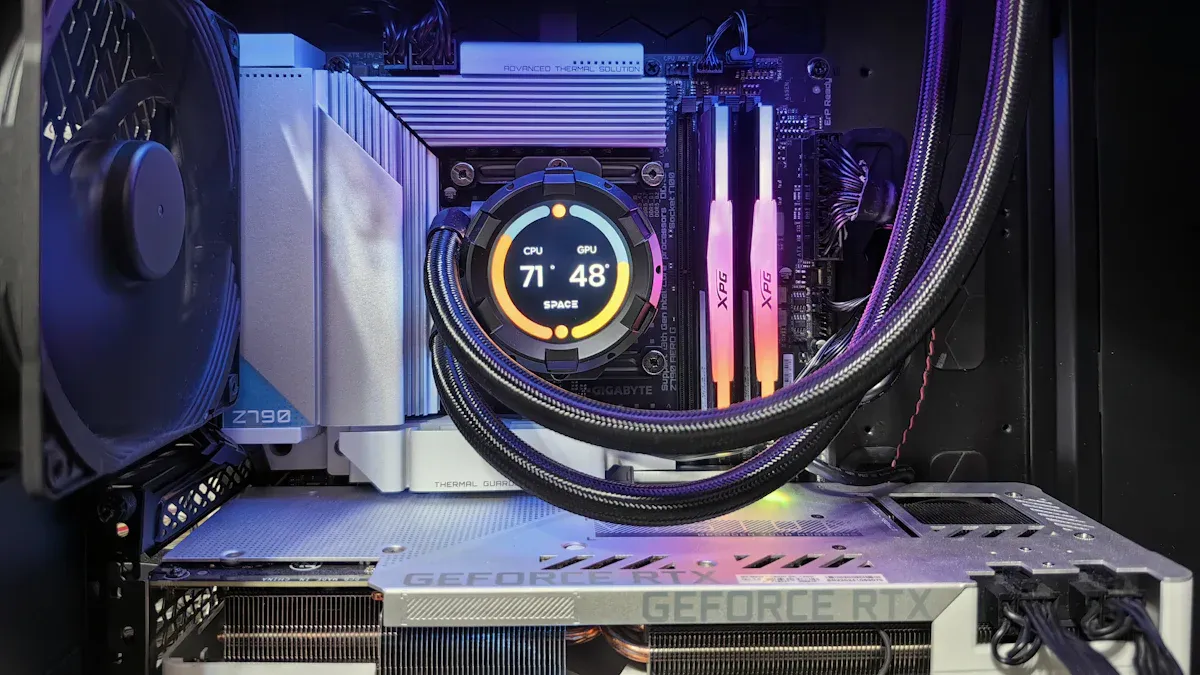How to Set Up an Affordable Cooling System for Your AV Cabinet

Have you noticed your AV equipment getting unusually warm or even shutting down unexpectedly? That’s a sign it might be overheating. Cabinet cooling is crucial to keep your devices safe and running smoothly. Heat can cause long-term damage to your equipment and even reduce its performance.
You don’t need to break the bank to solve this problem. Affordable cooling options exist, and they’re easier to set up than you think. Start protecting your gear today with some simple, budget-friendly solutions.
Tip: Regularly check for dust buildup inside your cabinet. It can block airflow and make cooling less effective.
Key Takeaways
Too much heat can harm your AV devices. Check often for signs like extra heat or sudden shutdowns to avoid expensive fixes.
Use both natural airflow and fans. Combining these helps keep your equipment cool.
Set up fans the right way. Put an intake fan at the bottom and an exhaust fan at the top for good airflow in your cabinet.
Keep track of your cabinet's heat. Use cheap tools to watch the temperature and stop overheating early.
Take care of your system often. Clean vents and check airflow every few months to keep it working well.
Why Cabinet Cooling Is Essential
Risks of Overheating for AV Equipment
Overheating can cause serious problems for your AV equipment. When devices operate in high temperatures, they become more prone to damage and malfunctions. This is especially true for sensitive components like processors and power supplies. If the heat isn’t managed, you might face costly repairs or even complete equipment failure.
Here’s a quick look at some documented risks associated with overheating:
Risk Type | Description |
|---|---|
Temperature Sensitivity | AV equipment is sensitive to temperature fluctuations, which can lead to damage or malfunction. |
Humidity Control | High humidity can cause equipment failure; dehumidifiers are recommended to maintain stability. |
HVAC Maintenance | Regular servicing of HVAC systems is crucial to ensure a controlled environment for AV equipment. |
Note: Safety standards require AV equipment to operate within specific temperature ranges. Regular temperature testing can help you avoid burn injuries or fire hazards.
By keeping your cabinet cooling system in check, you can prevent these risks and ensure your equipment stays safe.
Impact of Heat on Performance and Lifespan
Heat doesn’t just damage your equipment—it also affects how well it performs. When temperatures rise, your devices may slow down or stop working altogether. Over time, excessive heat can shorten the lifespan of your AV equipment.
Here’s how heat impacts performance and durability:
Thermal Expansion and Contraction: Constant temperature changes can weaken electronic components, causing broken connections or delamination.
Electrical Performance: Heat can distort signals and even lead to complete breakdowns by altering the electrical properties of components.
Material Degradation: High temperatures speed up material wear and tear, reducing insulation and conductivity.
If you want your AV system to last longer and perform better, managing heat is essential. A good cabinet cooling setup can make all the difference.
Common Signs of Overheating in AV Systems
How do you know if your AV system is overheating? There are a few telltale signs you should watch for:
Devices feel unusually hot to the touch.
Equipment shuts down unexpectedly during use.
Fans inside your devices are running louder than usual.
You notice a burning smell or discoloration near vents.
Ignoring these signs can lead to bigger problems down the road. If you spot any of these issues, it’s time to take action. Start by improving ventilation or adding a cooling system to your cabinet.
Tip: Regularly monitor the temperature inside your cabinet. Affordable temperature monitoring tools can help you catch overheating before it becomes a serious problem.
Understanding Heat Sources in AV Cabinets
Heat-Generating Components in AV Systems
Your AV cabinet is home to several devices that generate heat. Each one contributes to the overall temperature inside the cabinet. For example, amplifiers and receivers are some of the biggest culprits. They work hard to process audio and video signals, which makes them heat up quickly. Gaming consoles, streaming devices, and Blu-ray players also add to the heat load. Even your cable box can get surprisingly warm after hours of use.
Power supplies are another major source of heat. They convert electricity into usable power for your devices, and this process naturally produces heat. If you’ve ever touched a power brick after a long movie marathon, you know how hot it can get.
Tip: Check the power ratings of your devices. Higher wattage often means more heat output. Grouping high-heat devices together can make cooling more challenging.
Poor Ventilation and Its Effects
Without proper airflow, heat has nowhere to go. Poor ventilation traps warm air inside the cabinet, creating a mini sauna for your equipment. This can cause your devices to overheat faster, even if they’re not running at full capacity.
Blocked vents are a common issue. Dust, cables, or even the cabinet’s design can restrict airflow. If your cabinet is fully enclosed or pushed against a wall, it’s even harder for heat to escape. Over time, this can lead to performance issues or permanent damage.
Note: Leave at least 2–3 inches of space around your devices for better airflow. If possible, choose a cabinet with built-in ventilation slots.
Environmental Factors Contributing to Heat
The room where your cabinet sits also plays a role. If the room is naturally warm or gets direct sunlight, the cabinet’s internal temperature will rise. High humidity can make things worse by affecting how efficiently heat dissipates.
Even the placement of your cabinet matters. A cabinet near a heating vent or radiator will absorb extra heat. Similarly, placing it in a tight corner can limit airflow and trap warm air.
Pro Tip: Keep your cabinet in a cool, shaded area. Use a small fan or air conditioner in the room to help maintain a stable temperature.
Affordable Cabinet Cooling Options

When it comes to keeping your AV cabinet cool, you don’t have to spend a fortune. There are plenty of affordable options to choose from, whether you prefer a simple setup or something more advanced. Let’s explore some of the best methods to keep your equipment safe and running smoothly.
Passive Cooling Methods
Passive cooling is a budget-friendly way to reduce heat without using electricity. It relies on natural airflow and smart design to keep your cabinet cool. Here are a few effective methods:
Passive Cooling Method | Description |
|---|---|
Free Cooling | Uses cooler ambient air to regulate internal temperatures, cutting energy use by up to 80%. |
Heat Exchangers | Devices like the PKS 3000 Series transfer heat efficiently while keeping dust and contaminants out. |
Insulated Cabinet Designs | Double-wall construction and insulation help maintain a stable internal environment by minimizing heat transfer. |
You can start with something as simple as improving ventilation or choosing a cabinet with built-in insulation. These methods are not only cost-effective but also eco-friendly.
Tip: Place your cabinet in a cool, shaded area to maximize the benefits of passive cooling.
Active Cooling Methods
Active cooling involves using fans or other powered devices to remove heat from your cabinet. While it requires electricity, it’s highly effective for cabinets with multiple heat-generating devices.
Evidence Description | Findings |
|---|---|
Increase in cooling energy demand | Cooling energy demand has risen significantly over the past two decades, highlighting the need for active cooling. |
Comparison of methods | Active cooling technologies show consistent effectiveness across various setups. |
Geographical patterns | Cooling needs vary by region, making active cooling essential in warmer climates. |
You can install cabinet fans, ventilation kits, or even small air conditioners. These tools actively push hot air out and pull cooler air in, keeping your equipment at a safe temperature.
Pro Tip: Look for energy-efficient fans to save on electricity costs while maintaining effective cooling.
Combining Passive and Active Cooling for Efficiency
For the best results, combine passive and active cooling methods. This approach balances energy efficiency with powerful cooling. For example, you can use insulated cabinets (passive) alongside fans (active) to maintain a stable temperature.
Cooling Method | Temperature Reduction | Power Yield Increase | Efficiency Gain |
|---|---|---|---|
CWIRAFs (Passive) | Significant | 11.2% | |
Active Cooling | Lower | N/A | N/A |
This combination not only reduces heat more effectively but also extends the lifespan of your equipment. It’s a smart way to get the most out of your cabinet cooling system without overspending.
Note: Start with passive methods and add active cooling as needed. This way, you can customize your setup based on your cabinet’s needs.
How to Set Up Your Cabinet Cooling System

Choosing the Right Fan Configuration
Picking the right fan setup is the first step to creating an effective cooling system for your AV cabinet. The goal is to ensure proper airflow that keeps your equipment cool without overcomplicating things. A good fan configuration includes both intake and exhaust fans. Intake fans pull cooler air into the cabinet, while exhaust fans push warm air out.
For the best results, place an exhaust fan near the top of the cabinet and an intake fan at the bottom. This setup works with natural convection, where warm air rises and cooler air sinks. It’s a simple yet powerful way to keep your cabinet cool.
When choosing fans, pay attention to their CFM (Cubic Feet per Minute) rating. This number tells you how much air the fan can move. Higher CFM ratings mean better airflow, but you’ll also need to consider the size of your cabinet and the amount of heat your devices generate. Real-world conditions, like blocked vents or tight spaces, can affect performance, so be ready to make adjustments if needed.
Tip: Look for fans with adjustable speed settings. They let you control airflow based on your cabinet’s cooling needs, saving energy and reducing noise.
Proper Placement of Fans and Ventilation
Fan placement plays a huge role in how well your cooling system works. Even the best fans won’t help if they’re not positioned correctly. To maximize airflow, place an exhaust fan at the top of the cabinet. This fan will expel the warm air that naturally rises. At the same time, install an intake fan at the bottom to draw in cooler air from the room. This setup creates a steady flow of air, preventing heat from building up inside the cabinet.
If your cabinet has ventilation slots, make sure they’re not blocked by cables, dust, or nearby walls. These slots are designed to help air circulate, so keeping them clear is essential. For cabinets without built-in ventilation, you can add vent panels or drill small holes to improve airflow.
Note: Avoid placing your cabinet in tight corners or against walls. These spots can trap heat and reduce the effectiveness of your cooling system.
DIY Cooling Solutions for AV Cabinets
If you’re on a budget or enjoy hands-on projects, DIY cooling solutions can be a great option. One simple idea is to use USB-powered fans. These small, affordable fans can be placed inside your cabinet to improve airflow. Just plug them into a USB port on one of your devices, and you’re good to go.
Another DIY trick is to create a custom ventilation panel. You can use a piece of perforated metal or plastic and attach it to the back or sides of your cabinet. This allows heat to escape while keeping dust and debris out.
For a more advanced solution, consider building a fan tray. This involves mounting multiple fans onto a flat surface, like a piece of plywood or metal, and placing it inside your cabinet. You can even add a temperature sensor to automatically turn the fans on and off based on the cabinet’s internal temperature.
Pro Tip: Use a small desk fan outside the cabinet to boost airflow. Point it toward the intake fan or ventilation slots for extra cooling power.
Budget-Friendly Product Recommendations for Cabinet Cooling
Affordable Cooling Fans and Ventilation Kits
You don’t need to spend a fortune to keep your AV cabinet cool. Affordable cooling fans and ventilation kits are widely available and easy to install. Look for USB-powered fans or small AC-powered models. These fans are compact, energy-efficient, and perfect for tight spaces. Many come with adjustable speed settings, so you can control the airflow based on your needs.
Ventilation kits are another great option. These kits often include multiple fans, mounting hardware, and even temperature sensors. They’re designed to fit most cabinets and provide a complete cooling solution. Some popular brands offer kits for under $50, making them a budget-friendly choice.
Tip: Check online marketplaces for deals on cooling fans and kits. You’ll often find discounts or bundles that save you even more.
Low-Cost Temperature Monitoring Tools
Keeping an eye on your cabinet’s temperature is just as important as cooling it. Low-cost temperature monitoring tools can help you track heat levels and catch problems early. Digital thermometers with probes are a simple and affordable option. You can place the probe inside the cabinet to get real-time readings.
For a more advanced solution, consider a wireless temperature monitor. These devices sync with your smartphone, letting you check the temperature remotely. Many models cost less than $30 and offer features like alerts when the temperature gets too high.
Pro Tip: Choose a monitor with a clear display and easy setup. This ensures you can start using it right away without any hassle.
DIY Tools and Materials for Custom Cooling
If you enjoy DIY projects, you can create your own cooling solutions with basic tools and materials. Start with a small desk fan or USB fan. These are inexpensive and can be placed strategically to improve airflow. You can also use perforated metal sheets or plastic panels to build custom ventilation slots.
For a more advanced project, try making a fan tray. You’ll need a piece of plywood or metal, a few small fans, and a power source. Mount the fans onto the tray and place it inside your cabinet. This setup provides targeted cooling and can be customized to fit your space.
Note: Always use safe materials and follow proper wiring practices when building DIY cooling solutions.
Keeping your AV equipment cool isn’t just about performance—it’s about protecting your investment. A proper cabinet cooling setup can prevent overheating, extend the lifespan of your devices, and save you from costly repairs. Whether you go for passive methods, active solutions, or a mix of both, there’s an option for every budget.
So, why wait? Start applying these tips today and give your AV system the care it deserves. Your equipment (and wallet) will thank you!
Reminder: Regular maintenance, like cleaning vents and checking airflow, keeps your cooling system working its best.
FAQ
How do I know if my AV cabinet needs cooling?
If your equipment feels hot, shuts down unexpectedly, or you hear loud fan noises, it’s time to act. Overheating can damage your devices. Use a temperature monitor to check heat levels inside the cabinet.
Can I use regular desk fans for cooling my cabinet?
Yes, desk fans work well for DIY setups. Place one near the cabinet’s intake or ventilation slots to boost airflow. USB-powered fans are also a great option for small spaces.
What’s the best fan configuration for my cabinet?
Use an intake fan at the bottom to pull in cool air and an exhaust fan at the top to push out warm air. This setup works with natural airflow and keeps your equipment cool efficiently.
Are passive cooling methods enough for my cabinet?
Passive cooling works for cabinets with fewer heat-generating devices. If your setup includes amplifiers or gaming consoles, combine passive methods with active cooling for better results.
How often should I clean my cabinet’s vents?
Clean vents every few months to prevent dust buildup. Dust blocks airflow and makes cooling less effective. Use a soft brush or compressed air for quick cleaning.
See Also
Selecting Optimal Cooling Solutions for ESTEL Telecom Cabinets
The Importance of Air Conditioning in Outdoor Telecom Cabinets
Exploring Various Cooling Techniques for Telecom Cabinet Applications
Enhancing Outdoor Cabinets Through Power, Cooling, and Monitoring
Benefits of ESTEL Cooling Solutions for Industrial Cabinet Use
CALL US DIRECTLY
86-13752765943
3A-8, SHUIWAN 1979 SQUARE (PHASE II), NO.111, TAIZI ROAD,SHUIWAN COMMUNITY, ZHAOSHANG STREET, NANSHAN DISTRICT, SHENZHEN, GUANGDONG, CHINA

